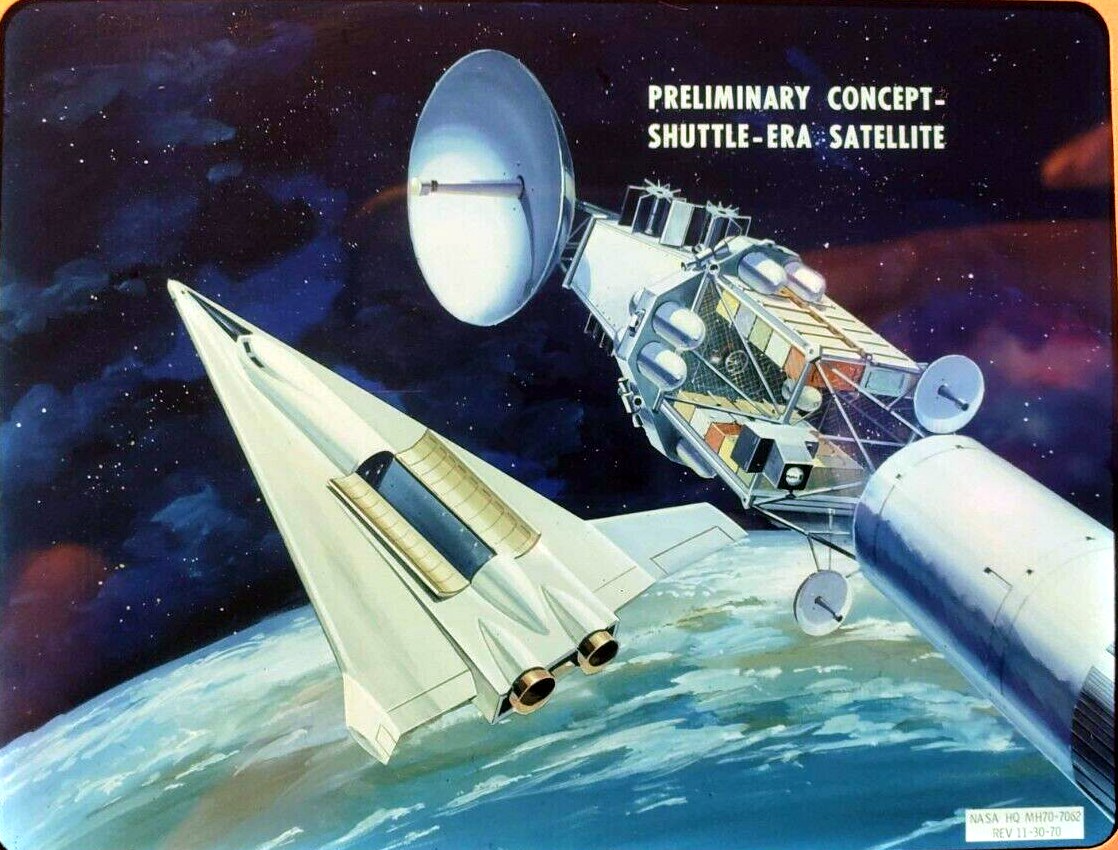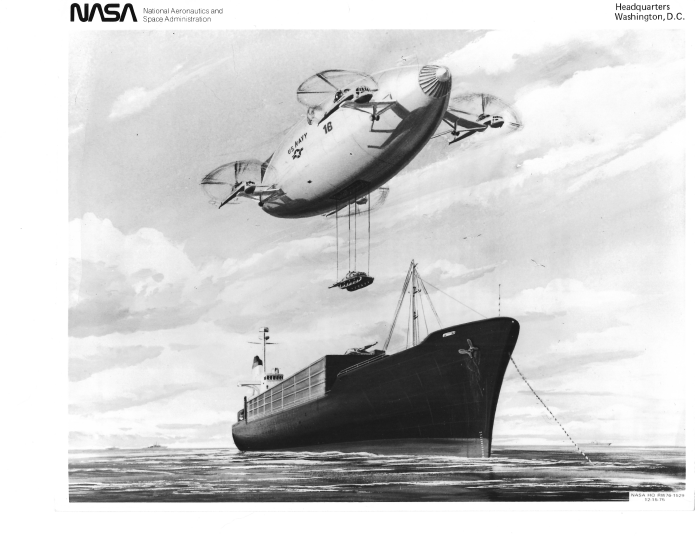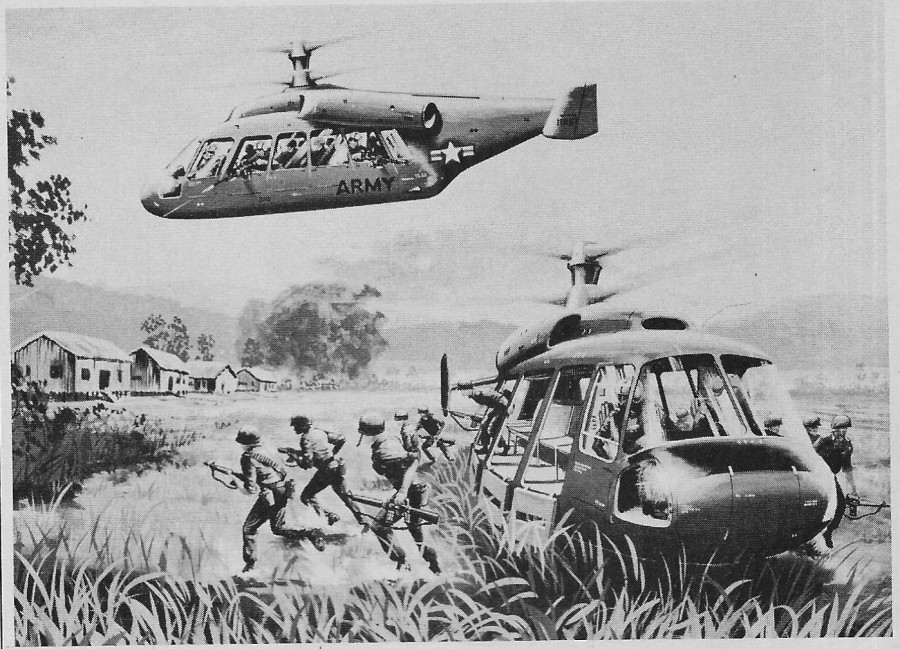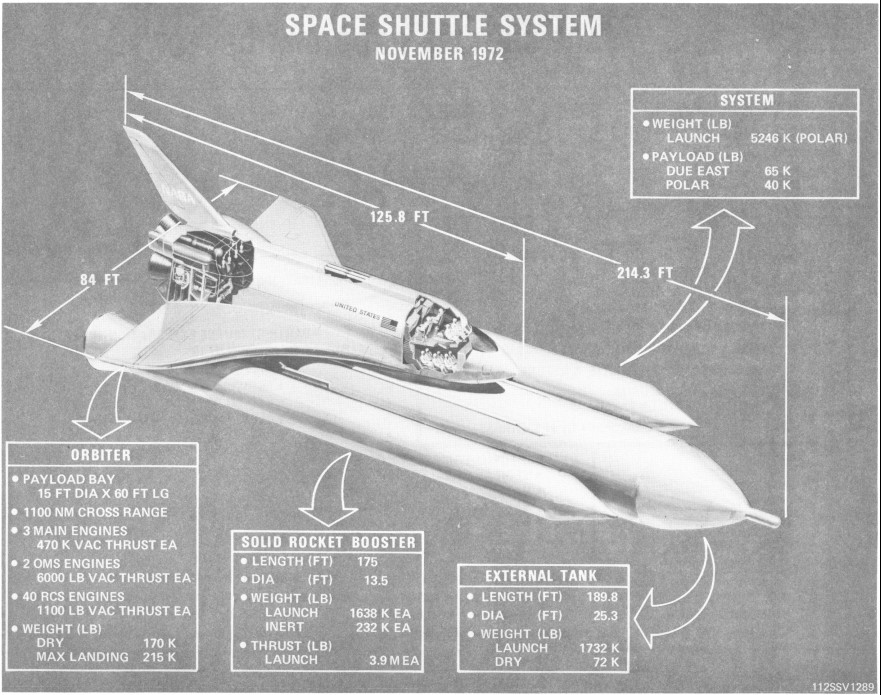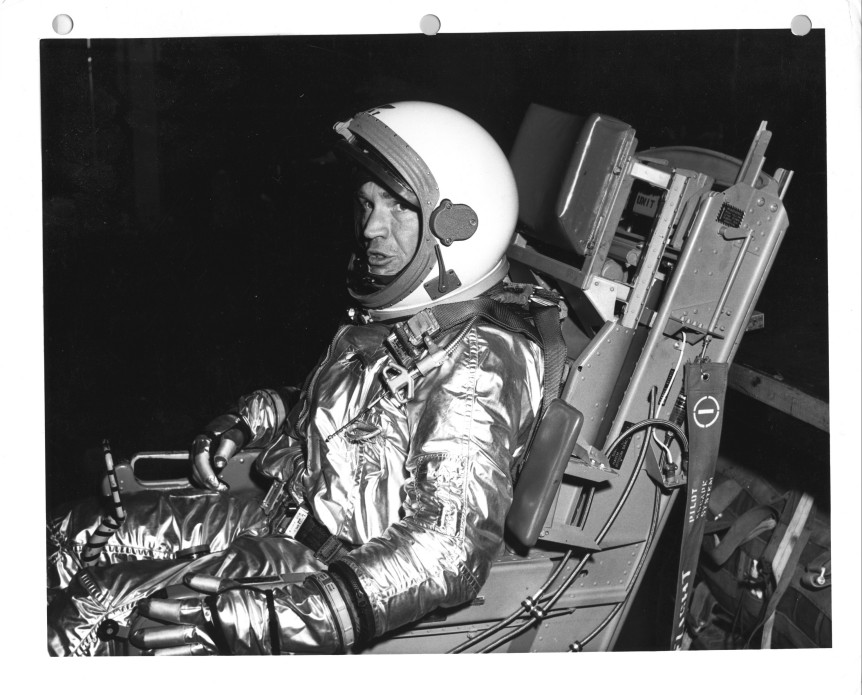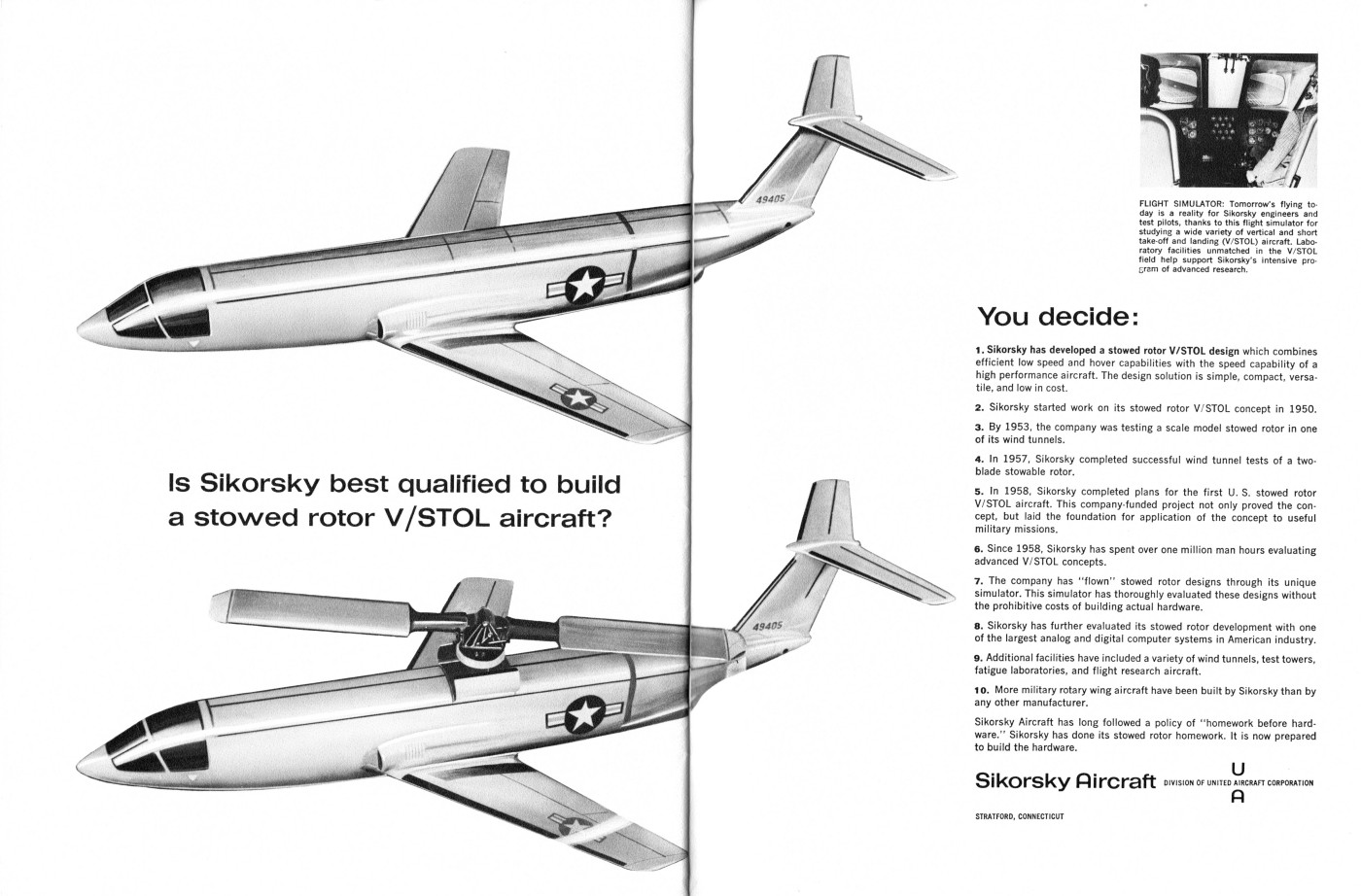Sold on ebay a while back, a piece of NASA color art depicting a Shuttle orbiter dropping off a satellite (more likely a deep-space probe given the bizarrely-located RTGs). The orbiter, however, does not seem to be closely based on an actual design. It has some similarity to a North American Rockwell concept, but I’d wager that it’s mostly artistic license.
Every few years people rediscover the Zeppelin and decide that it’s the future of aviation. And then… not much happens. Shown below is a mid-1970’s piece of NASA artwork depicting a heavy lift cargo dirigible that uses four CH-54 Skycranes for added lift and control. It’s shown here transporting an M-60 main battle tank to or from a cargo ship. Such an arrangement *could* work and has been tried, though it was hardly an unqualified success.
The full-rez scan of this cutaway has been made available to all $4 and up APR Patreons and Monthly Historical Document Program subscribers. It was uploaded to the 2019-12 APR Extras folder on Dropbox for Patreons and subscribers. If interested in this piece or if you are interested in helping to fund the preservation of this sort of thing, please consider becoming a patron, either through the APR Patreon or the Monthly Historical Document Program.
A concept circa 1968 for a Sikorsky “Advancing Blade Concept” troop transport. The ABC rotor system theoretically permits notably higher forward speed than is normal for helicopter, since the lift generator at high forward speeds is balanced (not the case for conventional choppers). The ABC rotor system was tested extensively in the 70’s with the Sikorsky S-69, but the design and materials of the time were not quite up to the challenge and the craft suffered from excessive vibration. In recent years the tech seems to have been more or less perfected with the S-97 Raider, which hopefully will go into production and finally fulfill the promise of the ABC rotor system.
NASA does not seem to have thought highly of the Boeing proposal for the Lunar Gateway…
Source Selection Statement for the Gateway Logistics Services Contract
Particularly within the Technical Approach subfactor (the most important within the Mission Suitability factor), Boeing’s proposal was the lowest rated of the four offers, with the inadequacy of its cargo stowage design identified as a significant weakness. I further note that Boeing took several exceptions to the RFP and predicated its fixed price on several key assumptions/exceptions. This made it impossible for the SEB to determine whether Boeing’s offered price was reasonable. From a Past Performance standpoint, Boeing did very well, having earned a High Level of Confidence rating (along with NGIS and SpaceX). However, Boeing’s High rating cannot overcome its Mission Suitability ratings and the significant issues present in its Price proposal. That is, since Boeing’s proposal was the highest priced and the lowest rated under the Mission Suitability factor, while additionally providing a conditional fixed price, I have decided to eliminate Boeing from further award consideration. This offeror’s evaluation results and my assessment thereof, combined with the relative order of importance of the RFP’s evaluation factors, have led me to conclude that Boeing is not competitive for award.
It’s Not Boeing And They Ain’t Going.
Gone are the days when Boeing was run by engineers and ruled the world.
Rockwell’s Space Shuttle design as of November, 1972. Obviously very similar to the final product, but a few notable differences, including the retro-rocket on the nose of the ET (meant to make sure the tank fell into the Indian Ocean), the sleeker OMS pods, fairings extending onto the cargo bay doors; the External Tank being about 2 feet narrow in diameter and this notably longer; the slightly repositioned boosters; and a myriad of slight differences in contours.
A mid-1960’s magazine ad, selling Sikorsky’s experience at developing stowed-rotor technology. The design used was a concept for a CARA (Combat Aircrew Recovery Aircraft), intended to dash at high speed over the jungles of Viet Nam, hover like a helicopter and winch up a downed pilot, then dash back to base. To do this the aircraft used a rotor that was spun up not by a mechanical drive system, but by tapping off the exhaust of the turbojet engines and routing it through ducts to the rotor tips. Doubtless it would have worked… and doubtless the transition phase would have been interesting and exciting.
Once again Patreon seems to be becoming unstable. So I’ve got an alternate: The APR Monthly Historical Documents Program
For some years I have been operating the “Aerospace Projects Review Patreon” which provides monthly rewards in the form of high resolution scans of vintage aerospace diagrams, art and documents. This has worked pretty well, but it seems that perhaps some people might prefer to sign on more directly. Fortunately, PayPal provides the option not only for one-time purchases but also monthly subscriptions. By subscribing using the drop-down menu below, you will receive the same benefits as APR Patrons, but without going through Patreon itself.
A page from a 1962 North American presentation on the X-15, showing a preliminary design 0f an underslung rocket-boosted scramjet test vehicle. It was expected to get to a blisteringly fast 17,000 feet per second (about Mach 15), but it doubtless would not have much of a burn time. The ABLX-259 rocket booster was a solid rocket used as the “Antares II” third stage of the Scout space launcher. Note that the X-15 had an extended nozzle.
